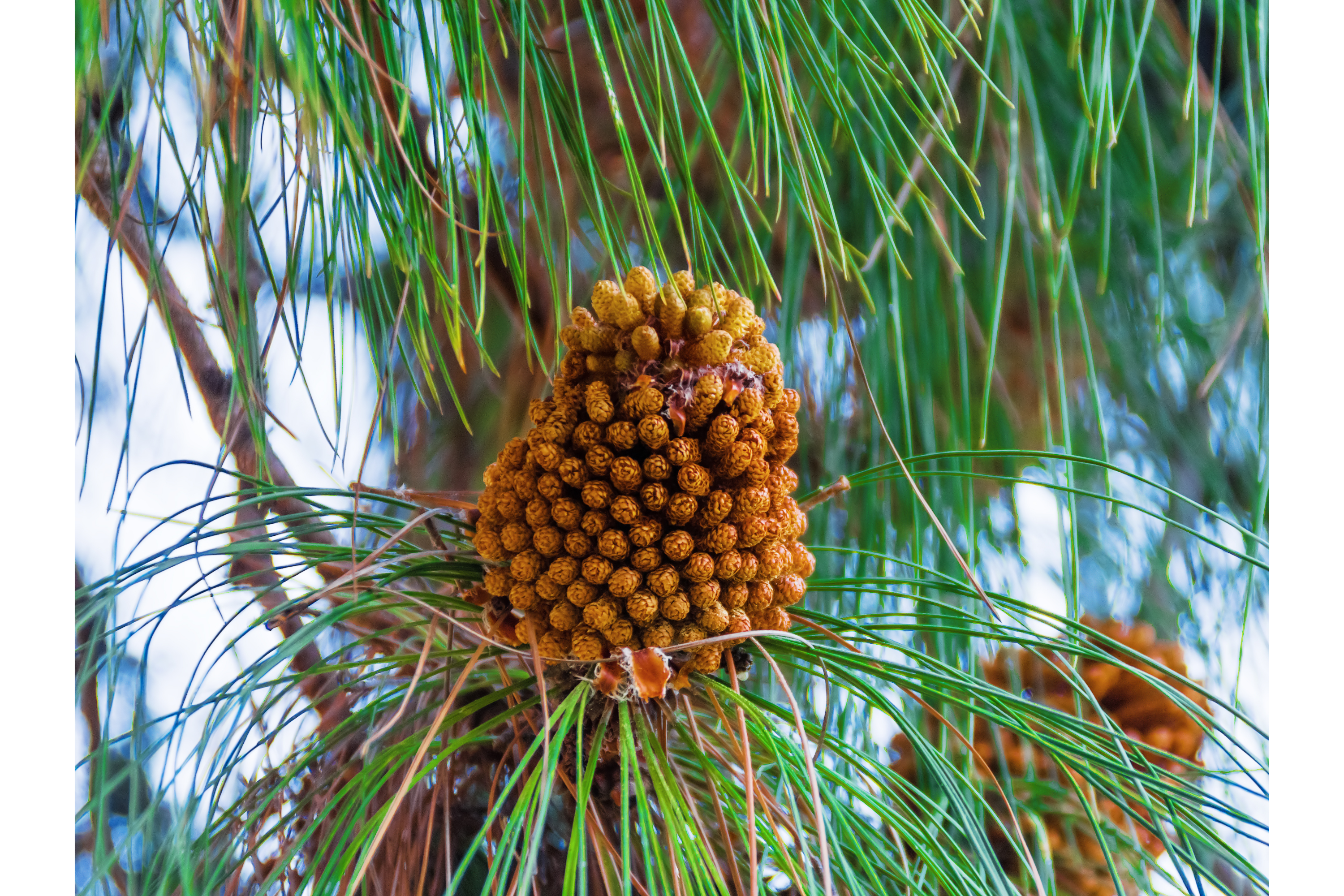Canary Island pine
(Pinus canariensis)

Description
Pinus canariensis, the Canary Island pine, is a species of gymnosperm in the conifer family Pinaceae. It is a large, evergreen tree native and endemic to the outer Canary Islands (Gran Canaria, Tenerife, El Hierro and La Palma) in the Atlantic Ocean. It is a subtropical pine and does not tolerate low temperatures or hard frost, surviving temperatures down to about −6 to −10 °C (21 to 14 °F). Within its natural area, it grows under extremely variable rainfall regimes, from less than 300 mm (12 in) to several thousands, mostly due to differences in mist-capturing by the foliage. Under warm conditions, this is one of the most drought-tolerant pines, living even with less than 200 mm (7.9 in) of rainfall per year. It is the vegetable symbol of the island of La Palma. Pinus canariensis is a large evergreen tree, growing to 30–40 m (98–131 ft) tall and 100–120 cm (39–47 in) trunk diameter (dbh), exceptionally up to 60 m (200 ft) tall and 265 cm (104 in) diameter. The green to yellow-green leaves are needle-like, in bundles of three, 20–30 cm (7.9–11.8 in) long, with finely toothed margins and often drooping. A characteristic of the species is the occurrence of glaucous (bluish-green) epicormic shoots growing from the lower trunk, but in its natural area this only occurs as a consequence of fire or other damage. This pine is one of the most fire-resistant conifers in the world. The cones are 10–18 cm (3.9–7.1 in) long, 5 cm (2.0 in) wide, glossy chestnut-brown in colour and frequently remaining closed for several years (serotinous cones). Its closest relatives are the Chir Pine (Pinus roxburghii) from the Himalaya, the Mediterranean pines Pinus pinea, Pinus halepensis, Pinus pinaster and Pinus brutia from the eastern Mediterranean.
Taxonomic tree:







